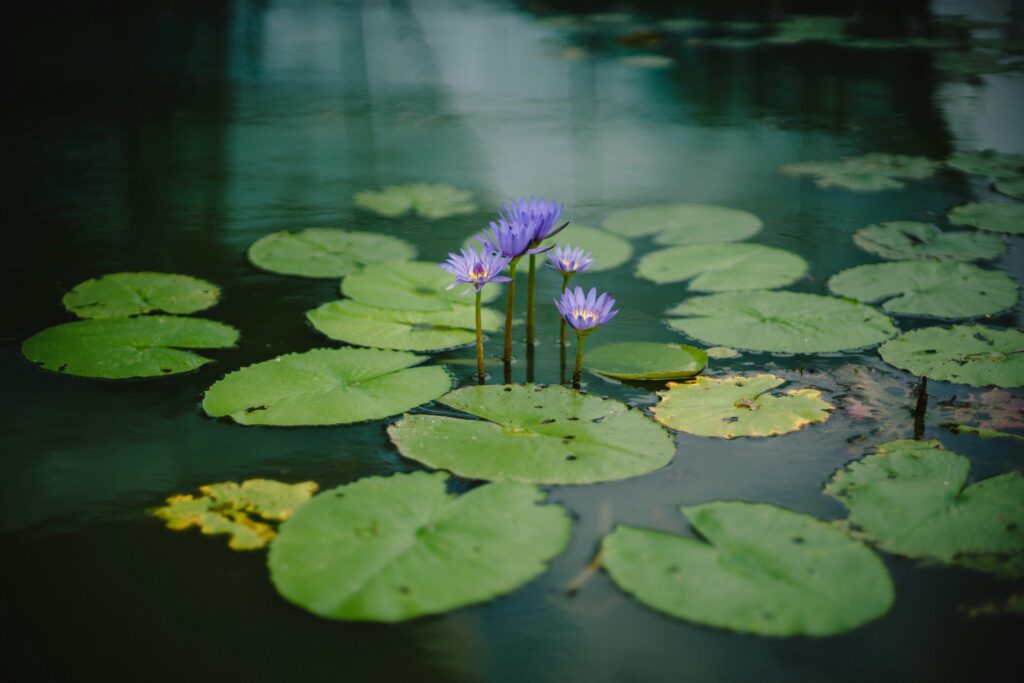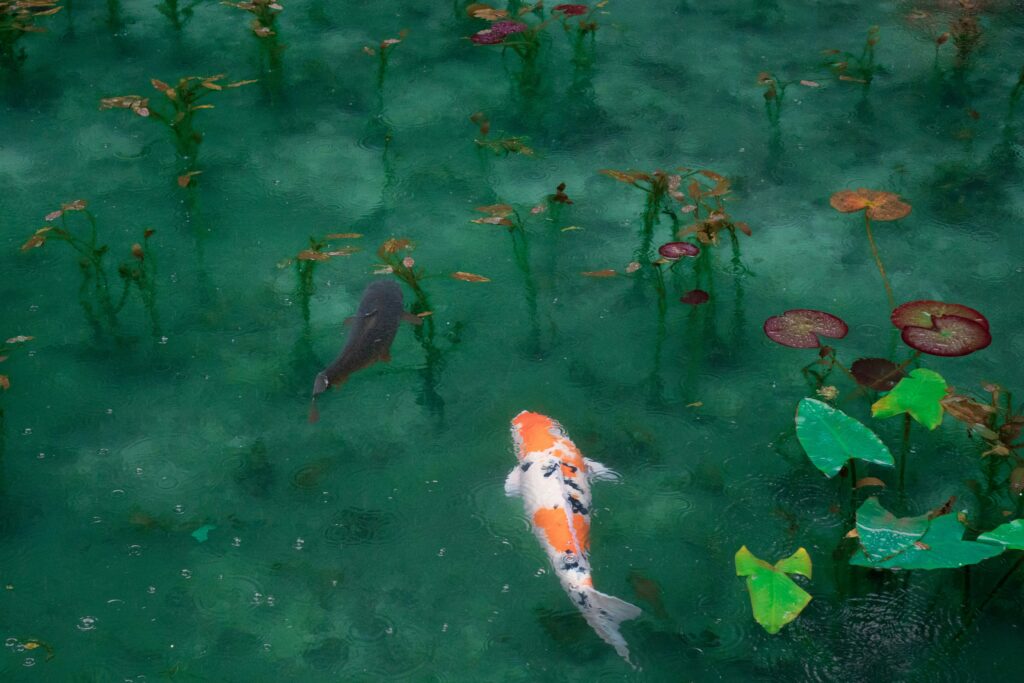Setting up a pond might seem like a daunting task for beginners, but fear not! We are here to guide you through the process of how to set up a pond for beginners and provide you with valuable tips and tricks along the way.
From selecting the right location to choosing the perfect plants and fish, we will cover everything you need to know in order to create a beautiful and thriving pond in your own backyard. So grab your gardening gloves and let’s get started on this exciting adventure!
Choosing the Right Location
Consider the amount of sunlight
When choosing a location for your pond, one important factor to consider is the amount of sunlight it will receive. Most aquatic plants and fish require sunlight to thrive, so selecting a spot that gets at least six hours of direct sunlight per day is ideal. Avoid placing the pond in a heavily shaded area, as this can limit the growth of plants and affect the overall health of the pond ecosystem.
Ensure it is easily accessible
Another aspect to consider when selecting a location for your pond is accessibility. You’ll want to choose a spot that is easily reachable for maintenance purposes. This will make it much easier to clean the pond, add or remove plants, and perform any necessary repairs. Accessibility also plays a role in determining whether you want to enjoy the pond from your patio or incorporate it into your yard for a more immersive experience.
Check for underground utilities
before digging the pond, it’s crucial to check for any underground utilities such as gas lines, water pipes, or electrical cables. This step is essential for safety reasons and to prevent any damage to existing infrastructure. Contact your local utility companies to have them mark the locations of underground utilities. It’s always better to be safe than sorry when it comes to potential underground hazards.
Determining the Size of the Pond
Consider the available space
The size of your pond will largely depend on the available space in your backyard. Measure the area you have in mind and consider the overall dimensions you’d like to work with. Keep in mind that larger ponds generally require more maintenance and may have a higher initial cost. A good rule of thumb is to aim for a pond that is proportional to your yard’s size, ensuring it fits harmoniously within the landscape.
Think about the purpose of the pond
Another aspect to consider when determining the size of your pond is its intended purpose. Are you looking to create a small decorative pond to enhance the aesthetics of your yard? Or do you have a passion for koi fish and want to build a larger pond for them to thrive in? Understanding the purpose of your pond will help guide you in selecting an appropriate size that aligns with your goals and preferences.
Factor in the maintenance requirements
It’s important to be realistic about the amount of time and effort you are willing to dedicate to pond maintenance. Larger ponds often require more frequent cleaning, water testing, and plant care. If you have a busy lifestyle or limited mobility, choosing a smaller pond may be more manageable for you. Consider your maintenance needs and capabilities when determining the size of your pond.

Selecting the Pond Design
Decide on the shape and depth
The design of your pond plays a significant role in creating the overall aesthetic and functionality of your outdoor space. When selecting the shape and depth of your pond, consider factors such as personal preference, available space, and the types of plants and fish you plan to have. Naturalistic ponds with irregular shapes and varying depths offer a more organic and visually appealing look, while formal ponds with geometric shapes can provide a more structured and elegant appearance.
Choose between preformed or flexible liners
When it comes to the material for your pond liner, you have two primary options: preformed or flexible liners. Preformed liners are rigid and come in predetermined shapes, such as kidney or oval. They are easy to install but may limit your design choices. Flexible liners, on the other hand, offer more freedom in shaping the pond and are ideal for creating natural-looking ponds with irregular outlines. Consider your desired design and flexibility needs when choosing between the two options.
Consider adding accessories like waterfalls or fountains
To enhance the visual appeal and create a soothing ambiance, consider incorporating accessories such as waterfalls or fountains into your pond design. These features not only add beauty and movement but also help to aerate the water, improving its quality. Waterfalls and fountains can be customized to fit the style and scale of your pond, offering additional opportunities for creativity and personalization.
Preparing the Pond Site
Clear the area of vegetation and debris
Before starting the actual installation of your pond, it’s essential to clear the area of any vegetation and debris. Remove any rocks, roots, weeds, or other potential obstacles that may interfere with the construction process. This step ensures a clean and smooth surface for the liner and prevents any unwanted organic matter from entering the pond and causing water quality issues.
Level the ground
To ensure the stability and longevity of your pond, it’s crucial to level the ground before installing the liner. Use a spirit level to determine if the ground is even or if it requires any adjustments. A leveled surface not only provides a solid foundation for the pond but also helps in preventing water from accumulating in certain areas, which can lead to uneven pond depth or potential leakage.
Dig the hole according to the chosen design
Once the ground is level, it’s time to excavate the hole for your pond. Dig the hole according to the chosen design, considering the desired shape and depth. Use a tape measure and marking stakes to ensure accurate dimensions. While digging, keep in mind the minimum recommended depths for different types of aquatic plants and fish species you plan to have. It’s important to provide adequate space for the roots of plants and a suitable environment for the inhabitants of the pond.

Installing the Pond Liner
Measure and cut the liner to fit the pond shape
With the hole dug, it’s time to install the pond liner. Carefully measure and cut the liner to fit the shape and size of your pond. Be generous with the measurements, as it’s always better to have more liner than less. It’s recommended to have at least 1-2 feet of excess liner around the perimeter of the pond to ensure a secure and watertight fit.
Place the liner inside the hole
Once the liner is properly cut, place it inside the hole, making sure it covers the entire area. Gently press the liner against the sides and bottom of the hole, ensuring there are no air pockets or gaps. Take your time to smooth out any wrinkles or folds, as they can create weak points and potentially lead to leaks later on. Properly positioning the liner at this stage is crucial for the overall integrity of your pond.
Smooth out any wrinkles or folds
Smoothing out any wrinkles or folds in the liner is an important step to achieve a professional and visually appealing finish. Begin by filling the pond with a few inches of water, which will weigh down the liner and help eliminate any remaining wrinkles. Use your hands or a soft broom to gently push any wrinkles toward the edges of the pond, working systematically from one side to the other until the liner lies smoothly against the walls and floor.
Adding Water to the Pond
Start filling the pond with water
Once the liner is properly in place, it’s time to start filling your pond with water. Use a garden hose or another water source to slowly add water to the pond. Avoid rushing the process, as adding water too quickly may dislodge the liner or disrupt the landscaping around the pond. Take your time and allow the water to settle in naturally.
Let the water sit for a few days
After filling the pond with water, it’s important to let it sit undisturbed for a few days. This allows the water to naturally dechlorinate and reach a temperature closer to the ambient conditions. During this period, you can focus on adding any necessary water treatments or conditioning agents according to the specific requirements of the plants and fish you plan to introduce. Patience is key during this initial phase of pond establishment.
Check and adjust the water level
Once the water has settled, check the water level and make any necessary adjustments. The water level should ideally be at a height that allows for proper circulation and aeration. Monitor the water level regularly, as evaporation and other factors can affect it over time. Add more water as needed to maintain the desired level, but be cautious not to overfill the pond, as excessive water can lead to flooding or overflowing.

Adding Plants to the Pond
Choose aquatic plants suitable for the pond
Selecting the right aquatic plants is crucial for maintaining a healthy and balanced pond ecosystem. Consider the size, depth, and lighting conditions of your pond when choosing plants. Floating plants like water lilies and lotus are popular choices for their aesthetic appeal and ability to provide shade and natural filtration. Submerged oxygenating plants, such as anacharis or hornwort, help to oxygenate the water and absorb excess nutrients, preventing algae growth. Marginal plants like cattails or irises add vertical interest along the edges of the pond.
Plant the aquatic plants at appropriate depths
Different aquatic plants have specific depth requirements for proper growth and development. Before planting, research the individual needs of the plants you have chosen. As a general guideline, place submerged plants in the deeper sections of the pond, where they can receive sufficient light and make use of available nutrients. Marginal plants should be planted along the shallower edges, allowing their roots to reach the water while their foliage remains above the surface.
Consider adding floating plants for aesthetic appeal
Floating plants not only provide shade and shelter for fish but also add a beautiful aesthetic touch to the pond. Plants like water lilies or water hyacinths float on the surface of the water, creating a carpet of greenery and often producing vibrant flowers. These plants help in reducing sunlight penetration, which can help control algae growth. Consider adding floating plants to help achieve a more natural and balanced look for your pond.
Introducing Fish and Other Creatures
Research suitable fish species for your pond
Adding fish to your pond can bring it to life and create an enjoyable aquatic experience. However, it’s crucial to research and choose the right fish species that are suitable for your pond’s conditions. Koi fish are a popular choice for their vibrant colors and graceful movements, while goldfish are often preferred for their resilience and adaptability. Consider factors such as pond size, water quality requirements, and compatibility with other pond inhabitants when selecting fish for your pond.
Acclimate the fish before introducing them to the pond
Once you have chosen your fish species, it’s important to acclimate them properly before introducing them to the pond. This process involves gradually adjusting the water temperature, pH, and other parameters to match the conditions of the pond. Allow the fish to acclimate in a separate container filled with pond water for about 15-20 minutes, gradually adding small amounts of water from the pond to their temporary habitat. This step helps reduce stress and increases the chances of a successful transition for the fish.
Consider adding snails or other beneficial organisms
In addition to fish, adding certain beneficial organisms like snails can contribute to a healthy pond ecosystem. Snails help in controlling algae growth by consuming excess nutrients and grazing on algae colonies. They also serve as an additional food source for fish, while their movement adds an interesting dynamic to the pond. Research the different types of snails or other organisms that are compatible with your pond and consider incorporating them to enhance the overall balance and biodiversity.
Maintaining the Pond
Regularly remove debris and fallen leaves
To keep your pond clean and prevent water quality issues, it’s important to regularly remove any debris or fallen leaves that accumulate in and around the pond. Use a small net or skimmer to skim the surface and remove any floating debris. You can also use a pond vacuum or rake to clean the bottom of the pond and remove any organic matter that may settle there. Regular cleaning helps maintain a visually appealing pond and prevents the buildup of harmful substances that can negatively impact your plants and fish.
Monitor water quality parameters
Regularly monitoring your pond’s water quality is essential for its long-term health and the well-being of its inhabitants. Use test kits to check parameters such as pH, ammonia, nitrite, and nitrate levels. These parameters help you ensure a suitable environment for your plants and fish, as well as detect any potential imbalances or toxin buildup. Make necessary adjustments or additions to the pond water, such as adding dechlorinator or nitrifying bacteria, based on the test results. Understanding and maintaining proper water quality is vital for the success of your pond.
Perform routine maintenance tasks like pruning and fertilizing plants
Beyond regular cleaning and water testing, maintaining your pond also involves routine maintenance tasks such as pruning and fertilizing aquatic plants. Trim any dead or decaying foliage to promote healthy growth and prevent the accumulation of organic matter that can contribute to nutrient imbalances. Fertilize plants as necessary, following the specific requirements of each species. Remember to use pond-safe fertilizers to avoid any harm to the pond ecosystem. Performing these routine tasks helps keep your pond and its inhabitants in optimal condition.
Preventing Pond Problems
Monitor for signs of algae blooms or excessive plant growth
Algae blooms or excessive plant growth can occasionally occur in ponds, leading to imbalances in water quality and detrimental effects on the ecosystem. Monitor your pond regularly for signs of these issues, such as green water or rapid expansion of plant colonies. If you notice any abnormalities, take action promptly to prevent further problems. Different methods, such as adjusting the lighting, reducing nutrient levels, or using natural remedies, can help control algae blooms or excessive plant growth and restore the balance within the pond.
Address any water quality issues promptly
Promptly addressing any water quality issues is crucial for the overall health and longevity of your pond. If you detect high ammonia, nitrite, or nitrate levels, take appropriate action to reduce these substances and restore optimal water conditions. Common remedies include partial water changes, adding beneficial bacteria, and ensuring proper filtration. Ignoring water quality issues can have negative consequences for your plants, fish, and the entire pond ecosystem. Regular monitoring and quick response are key to preventing and resolving such problems.
Protect the pond from predators like birds or raccoons
Ponds can be attractive to various predators, including birds, raccoons, or even neighborhood cats. These animals may target your fish or disturb the peace of the pond. Implement protective measures to safeguard your pond and its inhabitants. Options include installing netting or a cover to deter birds, creating hiding spots for fish, or even using motion-activated deterrents. By taking preventative measures, you can ensure the safety and security of your pond ecosystem.
How To Set Up A Pond For Beginners
Setting up a pond can be a rewarding project that brings beauty and tranquility to your outdoor space. By following these guidelines and understanding the important considerations for each step, you’ll be well on your way to creating a thriving pond that you can enjoy for years to come.
Remember to regularly maintain and monitor your pond, taking proactive measures to address any issues that may arise. With a little effort and a lot of love, your pond will become a cherished feature of your garden, providing a haven for fish, plants, and moments of peace and relaxation.
You should now be armed with enough information to go outside and get started on your very own little piece of aquatic paradise. If you need more information, check out ‘Is It Hard To Maintain A Fish Pond‘.
